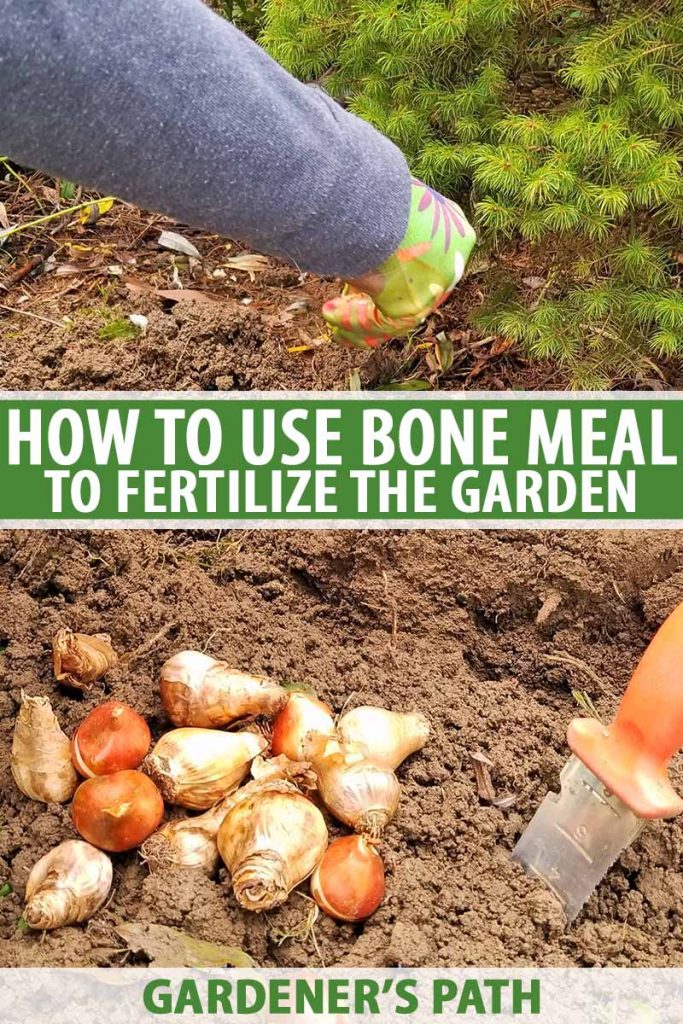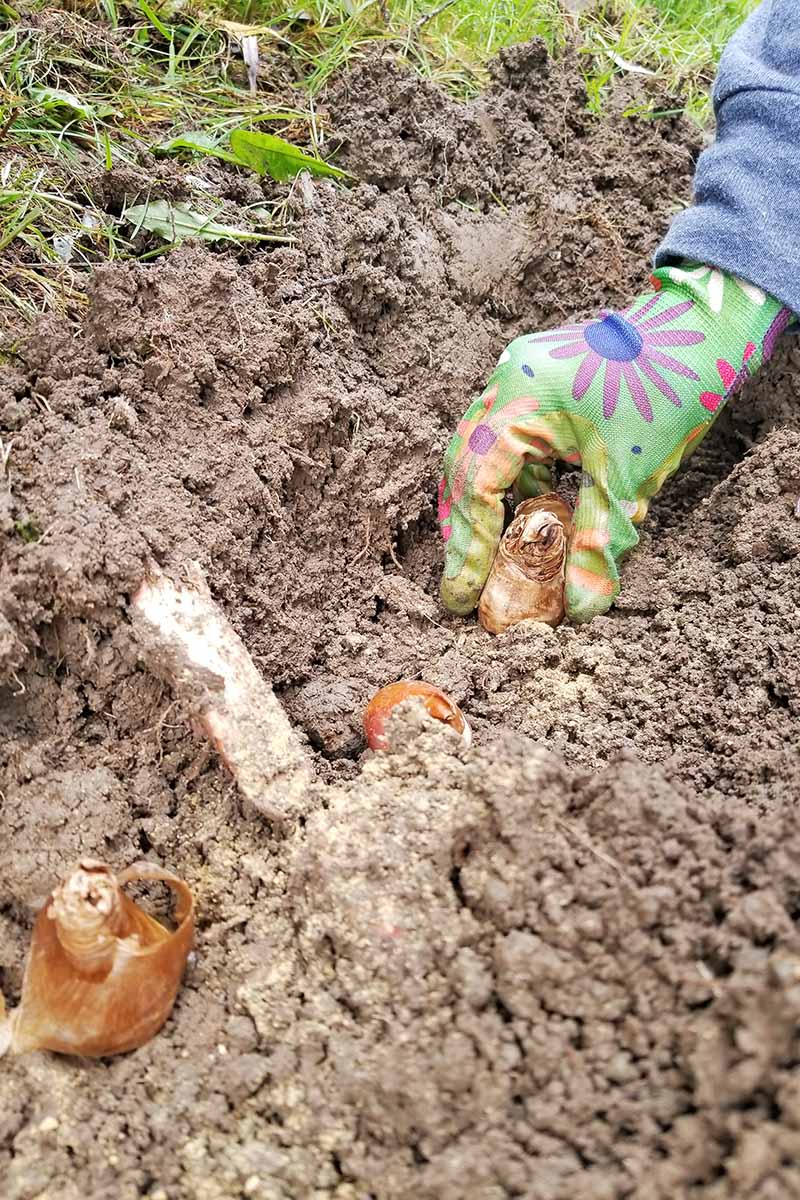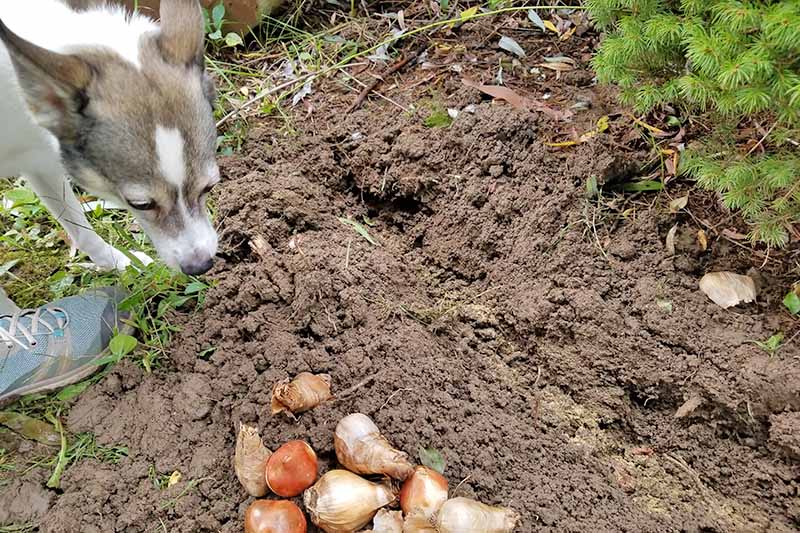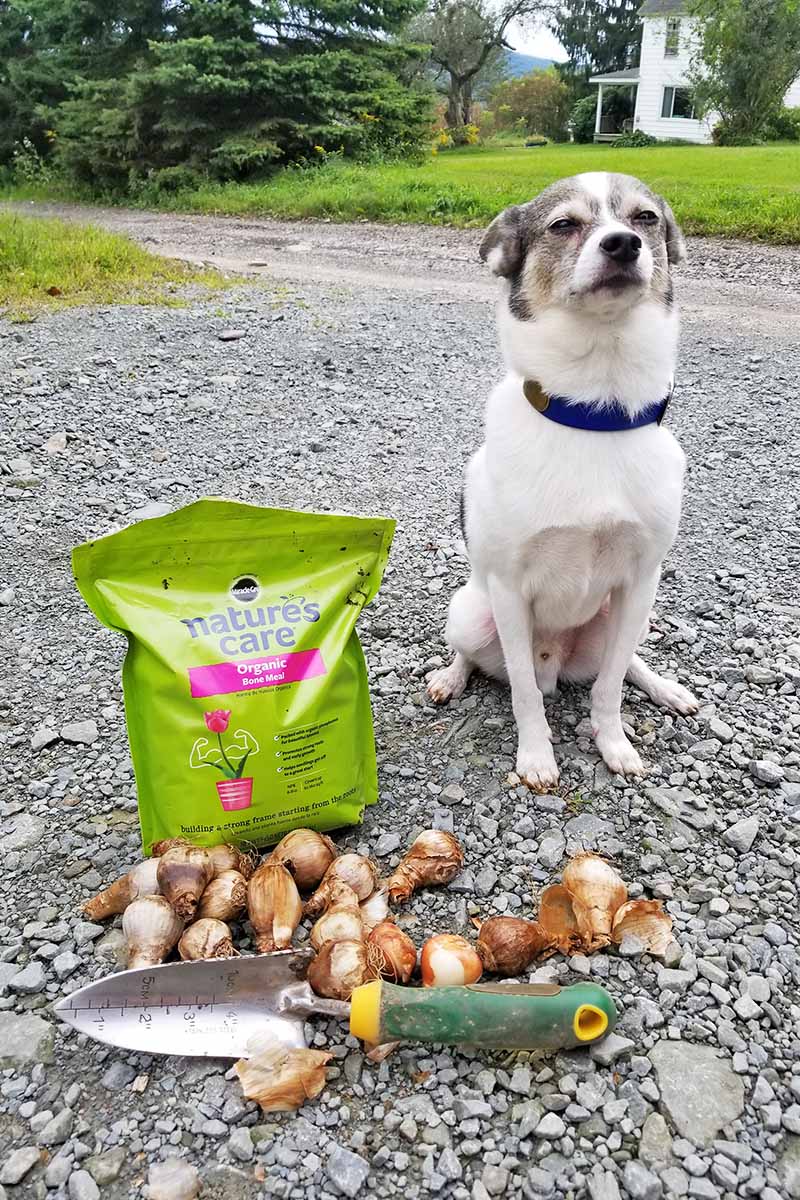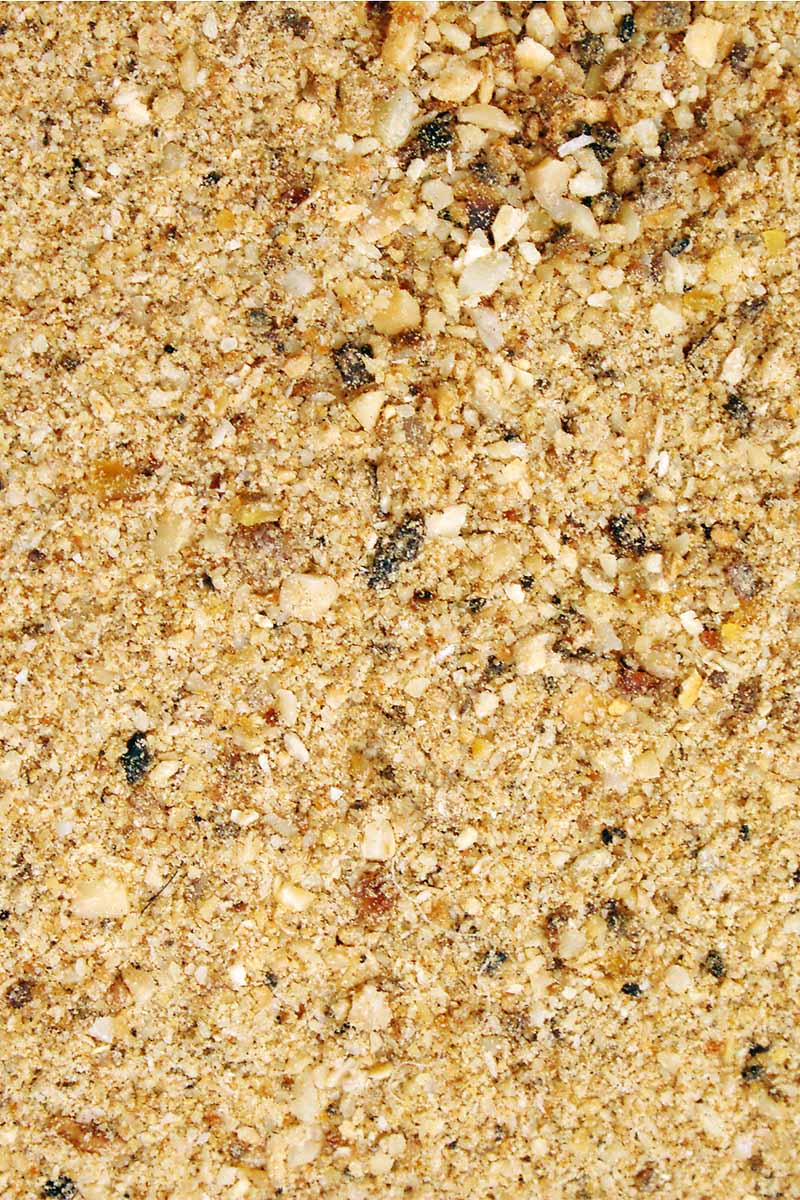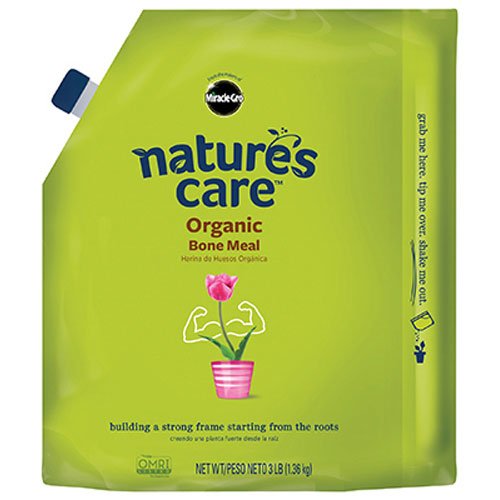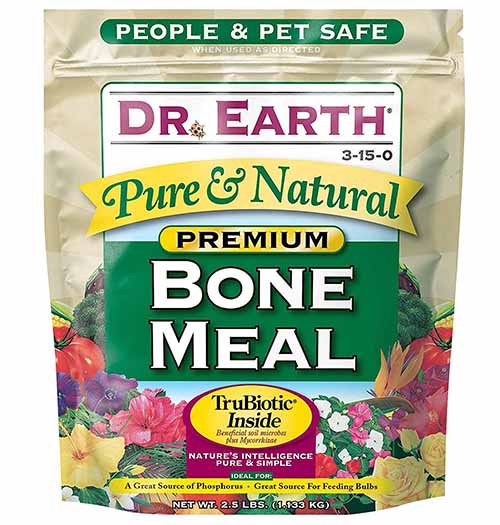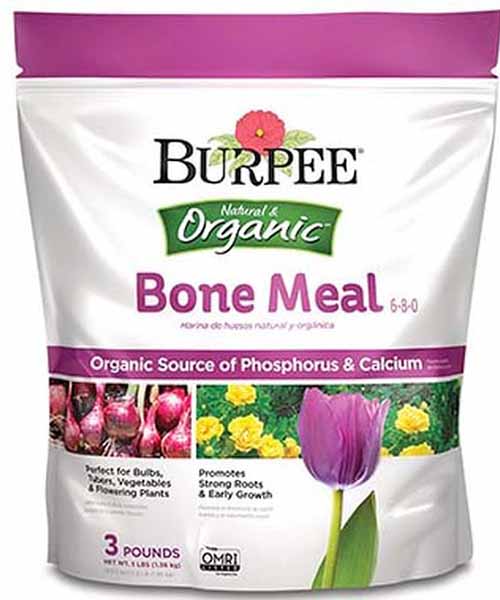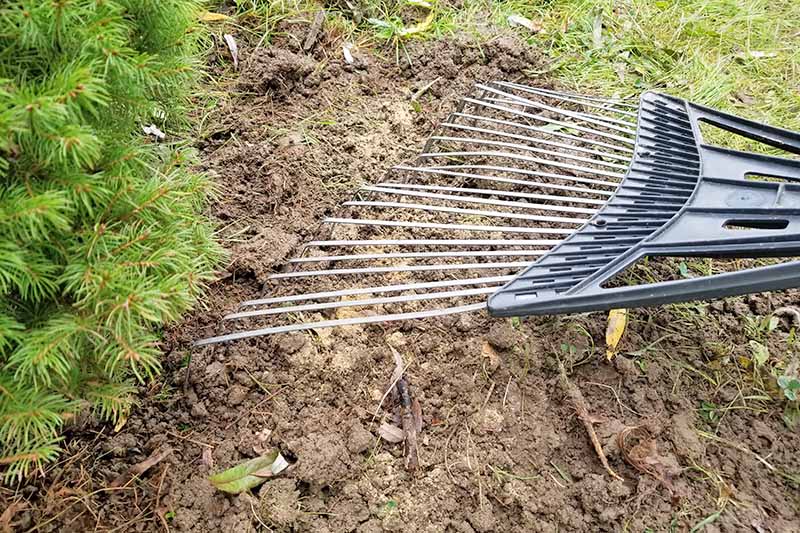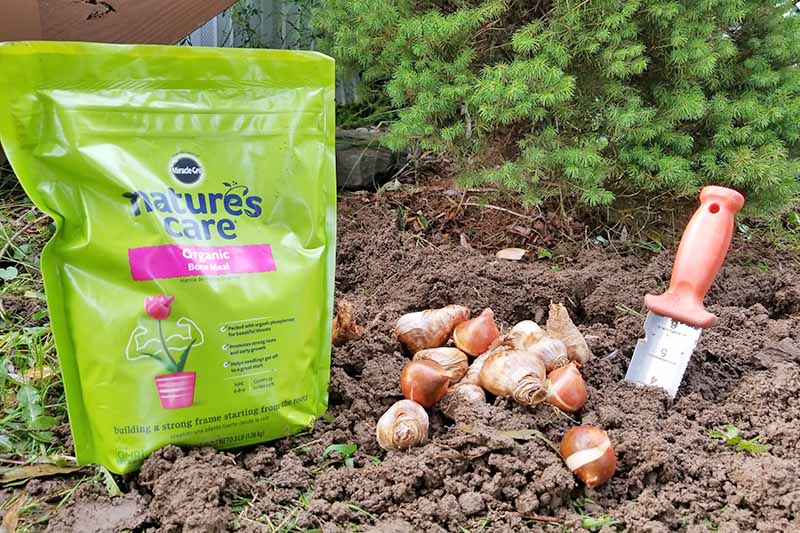Meat bone waste from slaughterhouses undergoes a steaming process before being pulverized into granules or powder for use as a soil amendment. Rich in phosphorus (P), it also contains calcium and a trace of nitrogen. We link to vendors to help you find relevant products. If you buy from one of our links, we may earn a commission.
Soil Sense
Fertilizers occupy a lot of shelf space in garden centers. Packages promise lush foliage, vibrant blossoms, and plentiful fruit if applied per manufacturer instructions. But what they don’t always mention is that they may be totally unnecessary. The only sure way to know if you should apply bone meal to your garden is to test a soil sample for nutrient deficiencies. Check out our article on the topic, then contact your local agricultural extension service for more information. Garden dirt that is not deficient in P not only doesn’t need it, but may be harmed by its addition. Soil teems with microbes that work in tandem with nutrients to provide plants with the energy they need to thrive. Per the Colorado State University Extension, the application of phosphorus to soil that doesn’t need it may result in chlorosis, a yellowing of leaves due to impaired chlorophyll production. In addition, it may destroy essential mycorrhizal-forming fungi, and soil’s ability to take up vital nutrients like iron. The Master Gardener Garden Notes of the Colorado State University Extension on organic fertilizers state, “phosphorus from bone meal is only available to plants in soils that have a pH below 7.0.” If your soil pH is above 7.0, or on the alkaline side of neutral, the phosphorus in this type of organic fertilizer is unavailable for uptake by plant roots. Before applying this product to your garden, always have the soil tested to determine nutrient needs and current pH levels.
Use as Recommended
If testing confirms a P deficiency, you may be directed to apply 10 pounds of bone meal for every 100 square feet of garden soil. Follow the instructions on the package for application. Over a period of about four months, soil microbes digest the organic fertilizer, creating food for plants. One application per growing season is all you need. Fertilizer products vary and may be compared by their N-P-K, or nitrogen-phosphorus-potassium, ratios. Per the above-referenced pros at Colorado State, 3-15-0 is a typical formula suitable for boosting phosphorus.
The (Potentially) Darker Side
If you think this type of organic fertilizer is appropriate for your garden, consider the following three topics currently trending on the subject before purchasing a product:
1. Consider Pet and Child Safety
This organic fertilizer is generally marketed as safe for people and pets, but it has a level of potential toxicity that may cause serious gastrointestinal illness if ingested. Per the ASPCA, calls about pets eating lawn and garden products such as bone meal fertilizer were among the top 10 reasons for calls to animal poison control in 2017. Be sure to blend it well into the soil, and secure unused quantities where they are safe and out of reach.
2. Beware of Runoff
Phosphorus-containing fertilizers raise a red flag because their runoff may cause algae blooms that threaten ecosystems. This occurs with water-soluble phosphorus products, and is not likely to happen with powdered or granulated bone meal, which does not leach and is the least likely culprit in such situations. If you’re buying the correct product, this generally isn’t something that you need to worry about.
3. Avoid Potential for Contamination
There is some concern that animal byproducts may be contaminated with bovine spongiform encephalopathy, aka BSE, or mad cow disease. According to a Bovine Spongiform Encephalopathy (BSE) Questions and Answers document provided by the FDA, contaminated feed may have been a contributing factor to the outbreak of the disease in Britain in 1993. However, the USDA Animal and Plant Health Inspection Service states: “Regulations from the Food and Drug Administration (FDA) have prohibited the inclusion of mammalian protein in feed for cattle and other ruminants since 1997 and have also prohibited high risk tissue materials in all animal feed since 2009.” There is no mention of concerns over the use of bone meal fertilizer, however, the purchase of American-made products may be the best choice for both feed and fertilizer, in terms of safety.
Application Tips
When applying any sort of fertilizer, moderation is key. Too much fertilizer can injure plants, and much of the excess will be washed away and become a waste. Available from a brand that many gardeners trust, it’s made with organic ingredients in a 6-8-0 mix of porcine bone meal to promote strong roots and flowers. Dr. Earth Pure & Natural Bone Meal, 2.5 lbs. For extra peace of mind, it is labeled “People & Pet Safe When Used As Directed.” Burpee’s Natural & Organic Bone Meal is another recommended option, OMRI labeled for organic use, with a 6-8-0 mix.
Burpee Natural & Organic Bone Meal This product is available from Burpee in 3-pound bags. Our writer Matt Suwak provided the following directions:
Step 1 – Dig
First, dig out the area where you’ll be planting your bulbs. We used a small sprinkling of bone meal at the bottom of the planting area, added a thin sprinkling of soil, then plopped the bulbs into place.
Step 2 – Cover
Cover the bulbs with loose earth, then apply a light sprinkling of bone meal to the surface. The package that we were working with recommends 1 tablespoon per square foot, or 1 cup per 20 square feet, and this recommended ratio is relatively standard. I’ve never been one for this kind of specificity, so instead I lightly sprinkled the fertilizer on top of the soil.
Step 3 – Rake
Rake the fertilizer into the soil to prevent it from being washed away, or gobbled up by critters. If you’re applying mulch to the planting area, this is when to do it.
Step 4 – Water
Water in the bone meal. This is an important step, and should not be ignored unless rain is definite in the next 24 hours! Every two months, apply a lightly sprinkled application to the planting area. You don’t need to rake in these additional layers, but watering the fertilizer in is necessary.
Start with the Soil
Remember, there are a lot of garden products from which to choose. Don’t be swayed by colorful pictures of happy plants when it’s the soil you need to be thinking about. Adding bone meal where phosphorus is deficient gives a jump start to plants like vegetable seedlings and bulb flowers. It fosters strong cell growth, sturdy root stock, and prolific flowering and fruiting. Used as indicated by a soil test, it may be just what your garden needs!
How to Fertilize Your Vegetable Garden Understanding your soil Safely applying garden chemicals, and organic alternatives
Tell us how your garden grows in the comments section below, and feel free to leave your questions below! Photos by Matt Suwak © Ask the Experts, LLC. ALL RIGHTS RESERVED. See our TOS for more details. Product photos via Burpee, MiracleGro, and Dr. Earth. Uncredited photos via Shutterstock. With additional writing and editing by Matt Suwak and Allison Sidhu.
